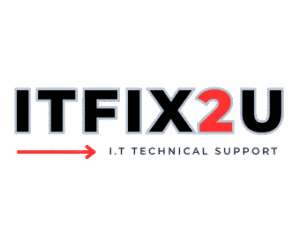Backup and Disaster Recovery
Fast, Friendly On-Site IT Help in Perth
We come to you – affordable, mobile technicians with 5-star service.
Mobile Service
We come directly to your home or business.
5-Star Rated
Hundreds of happy customers across Perth.
Expert Technicians
Certified IT pros with years of experience.
Same-Day Support
Fast response, available 7 days a week.
On-Site Service
We come to your home or office – no need to unplug anything.
100% Satisfaction Guarantee
We’re not happy until you are – your satisfaction is our top priority.
Transparent Pricing
No surprises – clear rates before we begin any work.
7-Day Support
Available every day of the week, including weekends.
Tell Us What You Need
Let’s dig into the issue:
Backup and Disaster Recovery
Backup and Disaster Recovery
Data is one of your most valuable assets, and losing it due to hardware failure, cyber-attack, natural disaster, or human error can be catastrophic for any business or individual. Our Backup and Disaster Recovery (BDR) services provide robust solutions to protect your critical data and ensure business continuity in the face of unforeseen events. A comprehensive BDR plan is essential for resilience and peace of mind.
- Data Assessment & Strategy: Identifying critical data, RPO (Recovery Point Objective), and RTO (Recovery Time Objective) to develop a tailored backup strategy.
- Backup Solution Implementation: Setting up automated local and/or cloud-based backup solutions for servers, workstations, and critical applications.
- Data Encryption & Security: Ensuring backed-up data is encrypted both in transit and at rest to protect against unauthorized access.
- Regular Backup Monitoring & Verification: Continuously monitoring backup jobs for success and periodically testing data restorability.
- Disaster Recovery Planning: Developing a documented plan outlining steps to recover IT systems and data in the event of a disaster.
- Recovery Drills & Testing: Conducting periodic disaster recovery drills to ensure the plan is effective and an RTO can be met.
- Rapid Data Restoration: Assisting with the swift recovery of data and systems when needed.
Why ITFIX2U for Your Backup and Disaster Recovery Needs?
Implementing a truly effective backup and disaster recovery solution is more complex than simply copying files to an external drive. It requires careful planning, the right technology, and ongoing management to ensure its reliability when you need it most. Many businesses underestimate the impact of data loss until it’s too late. The experts at ITFIX2U understand the critical importance of BDR. We can design and implement a comprehensive strategy that aligns with your specific business needs and budget, ensuring your data is securely backed up and can be quickly recovered. Don’t leave your business continuity to chance; let our professionals provide a resilient BDR solution that protects your valuable information and minimizes downtime in any crisis situation.
